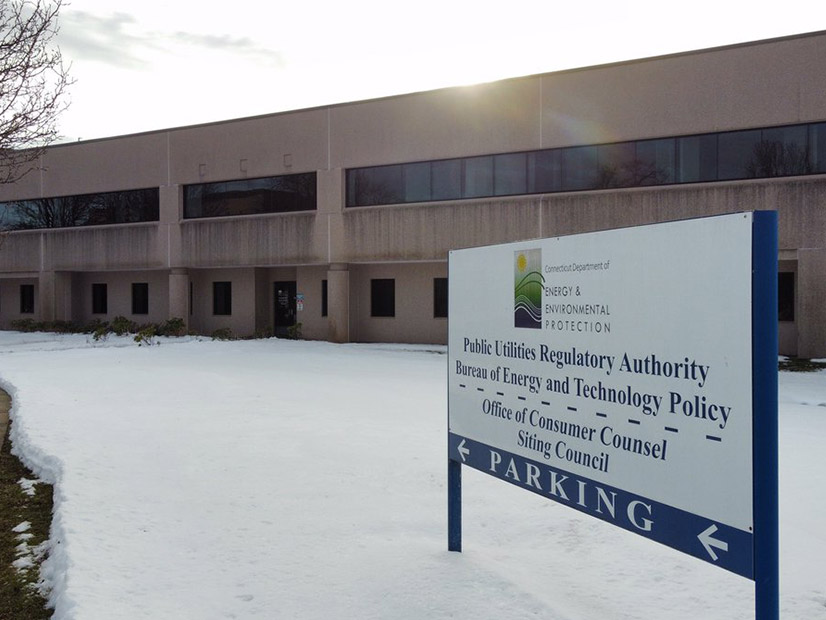A new electricity rate option for small, non-residential Eversource Energy customers in Connecticut could correct what solar advocates say has been a five-year death spiral for the state’s solar program.
Connecticut’s Public Utilities Regulatory Authority directed Eversource last week to offer optional interim rate riders to small businesses.
The move responds to concerns from Solar Connecticut that Eversource rates have damaged the state’s solar industry. State legislators also urged PURA to consider new rates to provide relief to small businesses that saw unusually high electricity bills during the pandemic.
SolarConn, in a filing to PURA, said a shift in 2015 from consumption rates (per kWh) to fixed charges (per kW) in rates for Eversource’s commercial customers decreased demand for solar. That shift, SolarConn said, changed the profitability profile for projects in the state’s Zero Emissions Renewable Energy Credit (ZREC) program.
By eliminating the ability of a solar project to net meter production against per kWh charges for consumption, “the entire economic model for distributed renewable energy was predictably upended,” the business group said.
The results of the 2015 rate change have been evident in the small ZREC program, SolarConn said, adding that “for over two years, almost no small ZRECs have been utilized for projects.”
PURA’s decision directs Eversource to establish an optional rider with “a volumetric component” (per kWh) for two of its existing rates.
Relief from the new interim rate should help in the latest round of solicitations for low-emissions REC and ZREC projects. Under the program, projects are supposed to realize a 15-year revenue stream from REC sales. That revenue, SolarConn said, has not materialized for many projects.
PURA said the creation of optional rate riders with both a volumetric rate and a demand charge component “is consistent with Connecticut law and public policy as it encourages economic development … by giving small businesses more control over their energy expenses.”
“Small businesses will have the potential to reduce their electric bills by decreasing their kWh electricity consumption through reduced usage, employing conservation and energy efficiency measures, or by participating in the LREC/ZREC program or its successor,” PURA wrote in its unanimous decision.
Eversource must update its website by July 1 to indicate the availability of the new optional riders — beginning Nov. 1 — and allow customers to sign up for them ahead of the effective date.
In addition, Eversource needs to show “how it plans to proactively work with new and existing customers” to ensure customers select the best rate option, according to PURA. The riders will be available until PURA approves Eversource’s new rate schedules in the utility’s subsequent rate-case proceeding.
Two Letters
PURA Chair Marissa Gillett said the leadership of the General Assembly’s Energy and Technology Committee sent a letter in December 2020 that called attention to “the importance of considering targeted relief” for Connecticut’s small businesses amid “the devastating impacts” of the COVID-19 pandemic. The committee’s leadership specifically requested PURA consider implementing interim rate riders to help small businesses curb “wildly high bills despite being closed or operating at reduced hours” because of “high fixed charges (per kW).” PURA concluded that the development of optional rate riders was “in the public interest, and is consistent with current practices and tariff offerings, the Take Back Our Grid Act, and PURA’s statutory authority. “The Take Back Our Grid Act, which passed into law in the wake of Tropical Storm Isaias in 2020, gives PURA legal latitude to consider an “interim rate decrease, low-income rates and economic development rates” for Eversource and United Illuminating customers.
In an additional supporting letter submitted in April, the Department of the Energy and Environmental Protection said the state’s Conservation and Load Management Plan demonstrates that “a reduction in both kW and kWh usage provides broad societal and energy benefits to Connecticut’s ratepayers.” According to DEEP, rate designs that encourage reductions in both demand and overall kWh consumption further realize those benefits.
DEEP stated that generally, “volumetric charges are shown to incent energy efficiency, and the greater the fixed cost within a rate structure, the less motivated a customer will be to lower their energy usage.”
Additionally, DEEP said commercial and industrial energy efficiency programs drive down demand and bring Connecticut “closer to its decarbonization goals.” In 2020, they provided 82,133 tons of annual carbon dioxide emissions reductions and 952,749 tons of lifetime emissions reductions. Cleaner air resulting from the state’s energy efficiency and clean energy programs deferred over $5 million in public health costs last year.


